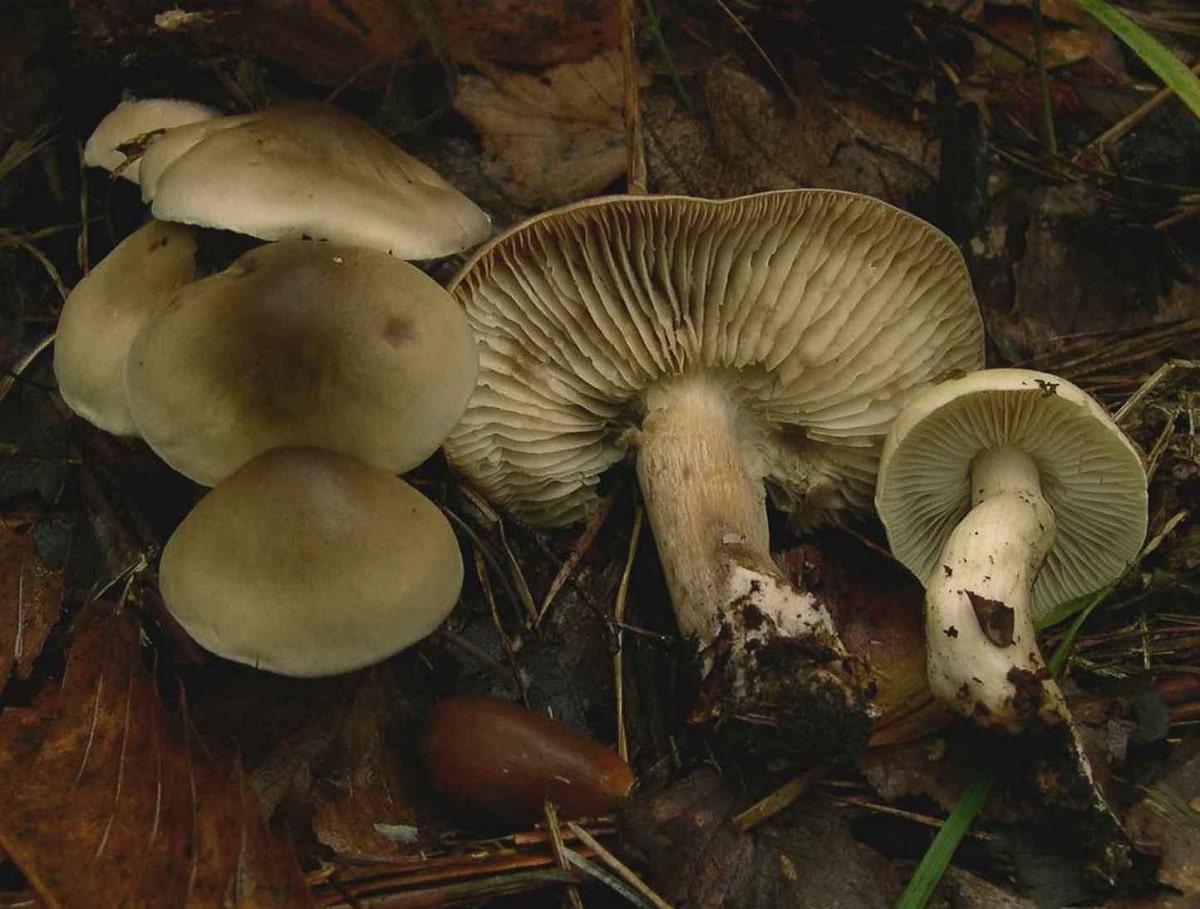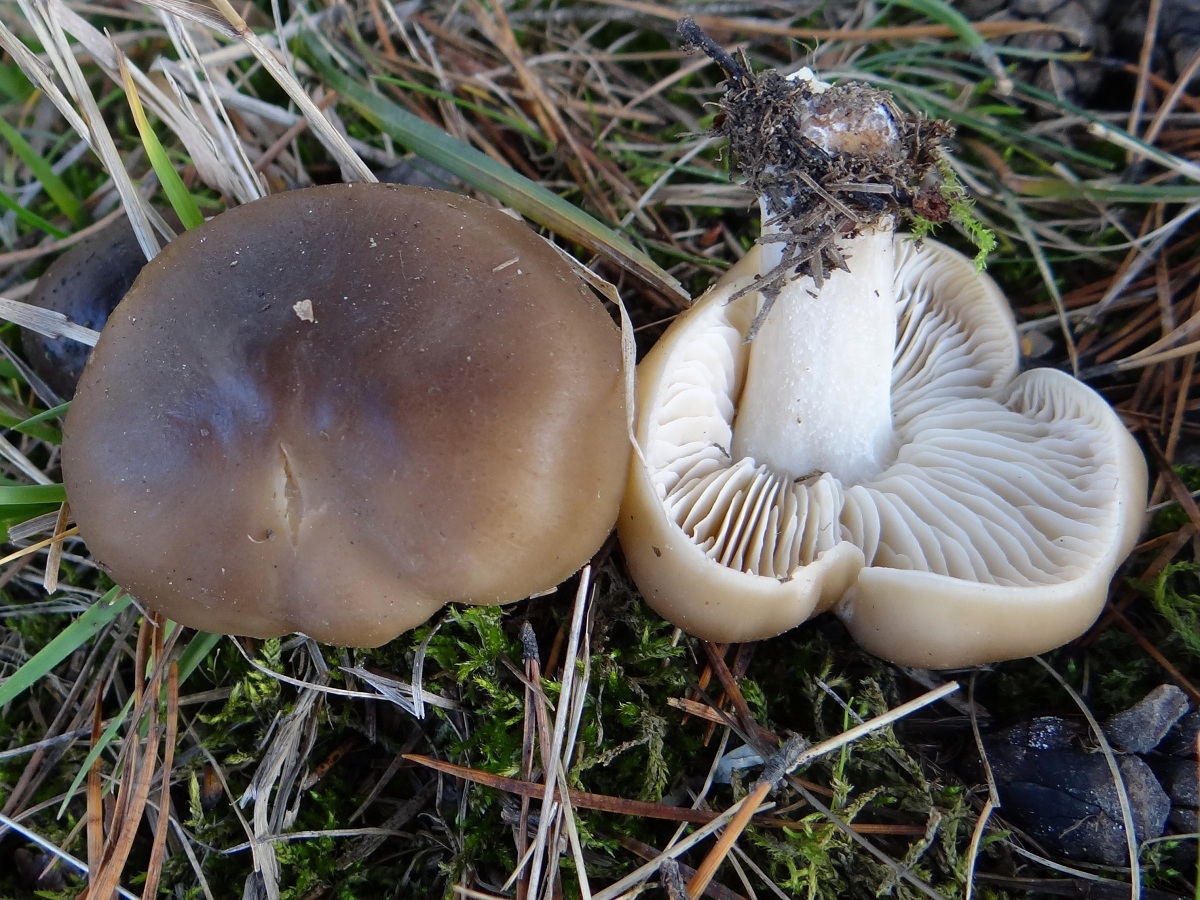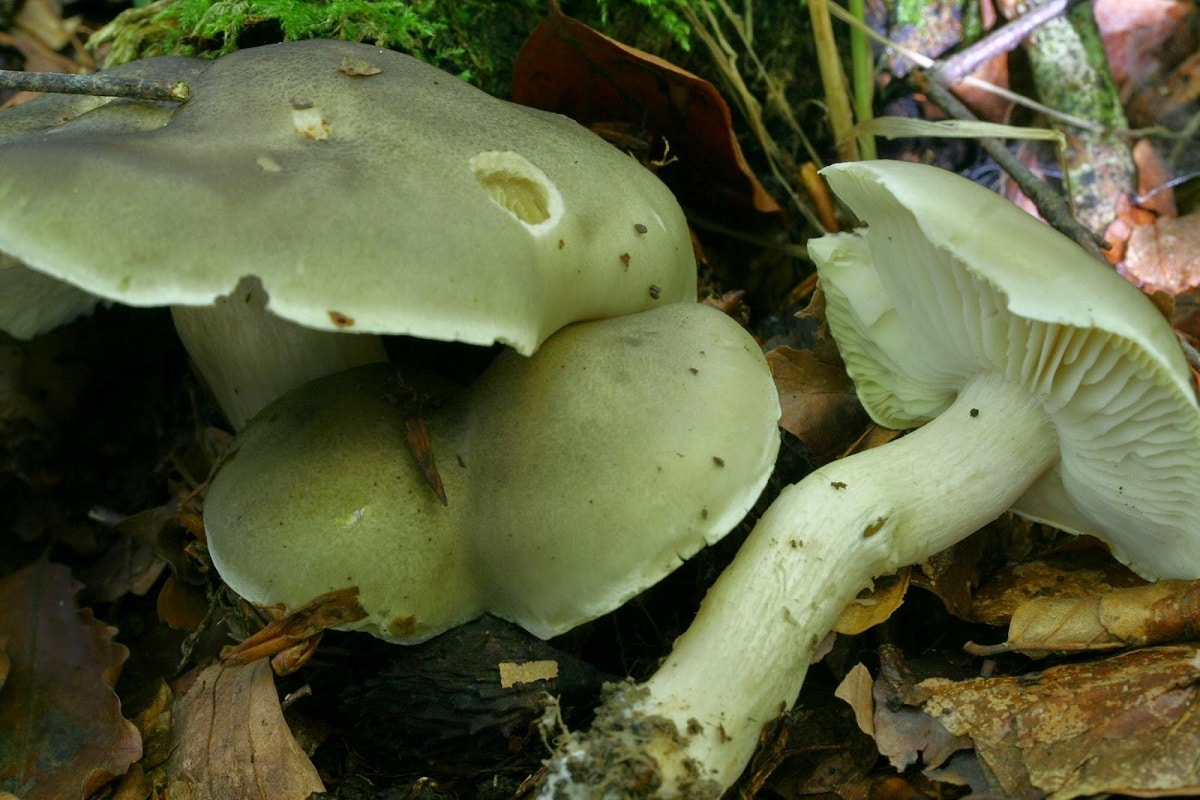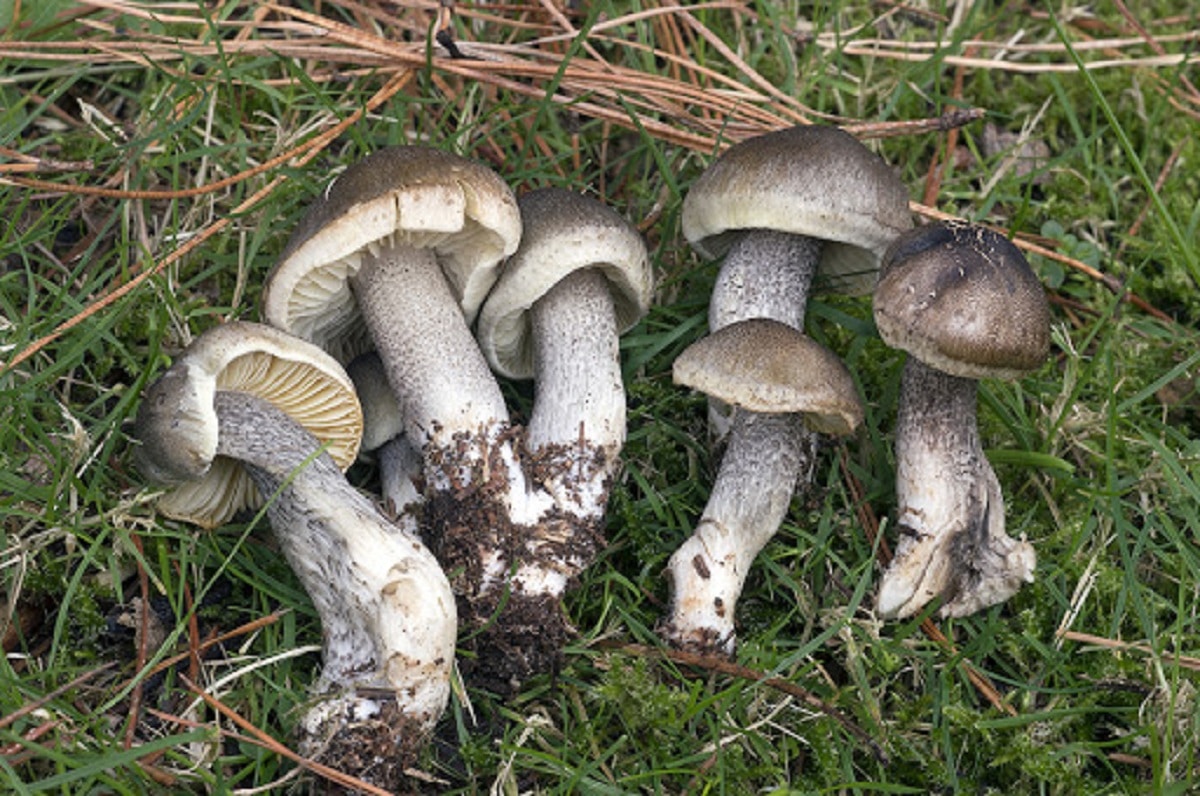
A type of mushroom that is inedible, although it is often confused with other mushrooms of the same group is the Tricholoma saponaceum. It is a mushroom that has a somewhat unpleasant smell and characteristics that make it unique but easily confused with others. For all those new to mushroom picking, this fungus can present some difficulties when collecting other edible species.
Therefore, we are going to dedicate this article to tell you all the characteristics, habitat and possible confusions of the Tricholoma saponaceum.
Key features

Hat and foils
The hat of this mushroom looks quite fleshy. They usually measure between 5 and 12 centimeters in diameter. When the specimen is young, we can see that it has a semi-spherical shape, characteristic of almost the vast majority of young mushrooms. However, as it develops, it takes on a somewhat more convex appearance and, finally, when it reaches maturity, it appears somewhat flatter. On some occasions we can see some specimens that have a slight mamelon in the center. This mamelon of Eden does not serve to differentiate it from other species, since within the group of Tricholomas There are usually specimens with a mamelon in the center of the hat.
Margins are incurred when young. When they reach adulthood, the margins of the hat are somewhat more wavy. It has a viscous and unctuous cuticle texture when the ambient humidity is somewhat higher. Normally, this mushroom grows in humid ecosystems, which is why it usually has the cuticle almost always in this way. The hat does not have a fixed color, but is usually variable. We find a range of colors that goes from greenish gray, brownish gray and olive gray. What all the hats of the world do have in common Tricholoma saponaceum is that it has the lightest color towards the margin and a cracked and flaky appearance in the center.
Its blades are spaced apart and not tight as in the rest of the species of the genus Tricholoma. These blades are low-cut and are separated from each other. They are ventruded-type blades with green tones, although they are whitish in color.
Pie and meat
As for the foot, it has a cylindrical shape and is quite robust. The base of the foot is fusiform and quite hard with respect to the hat. It can be easily recognized as it is a white or cream colored fibrous foot with some longitudinal fibrils. The foot can be one of the easiest parts to differentiate of this species with respect to others of its same group. It is usually between 3 and 10 centimeters in length and 1 to 2 centimeters in diameter. Quite often you can see that it is thinned at the base and it was agreed. Its surface is variable, either smooth or scaly and sometimes tinted grayish or totally covered by fine grayish flakes.
Finally, its meat is compact and white. Its characteristic strong smell is of soap and a bitter taste. The smell is one of the characteristics of this mushroom that is why it is not edible. It is white and consistent in color and turns red when you give it some cooler air.
Habitat of the Tricholoma saponaceum

This mushroom has a wide ecology. And it is that it does not have a single habitat. It can be developed with the litter from many different types of forests. We can find them in both deciduous, sclerophyte or coniferous forests. A clear preference can be noted for those areas where beech and holm oaks abound.
The time of development and growth is in autumn and begins to bear fruit at the end of August. The time of greatest abundance is during the month of September and the time of greatest production is the months of October and November.
These mushrooms require a lot of humidity for their development, so you can find it mostly in the litter. The litter is that area of the forest where the leaves decompose into organic matter. These leaves help to largely maintain the necessary environmental humidity so that this mushroom can develop in good conditions. In addition, it is the contribution of organic matter that these fungi need to be able to proliferate. Typically, most of this mushroom will be found where the greatest amount of litter is found within these mixed forests.
The amount of Tricholoma saponaceum that we can find in the forests It will depend on the amount of humidity in the environment and the summer rainfall. If it has been a humid summer, the number of mushrooms that will grow will be greater. On the other hand, if the first rains are in September, we will have to wait for their development in the following month. These rains can serve as an indicator for the greater or lesser presence of these mushrooms in the forest. Let's not forget that what we want is not to confuse this mushroom with others that are edible.
This mushroom is not edible not because it is poisonous, but because it has a mediocre culinary value. They are not usually consumed due to their unpleasant smell and the presence of hemolysins.
Confusions of the Tricholoma saponaceum

As we have mentioned before, this mushroom can be confused with others of the same group or other species. We are going to mention what are the main confusions of the Tricholoma saponaceum.
The main confusion is with the tricholoma sudum, although this one presents the most stylized foot. The clearest difference between these mushrooms are the sheets tighter and less greenish. It can also be seen that the tricholoma sudum it has a somewhat stronger redness when it brushes against humid air.
On the other hand, it can also be confused with the Clitocyve nebularis, better known by the common name of pardilla. The main difference is that this mushroom is separated by its tightest and most decurrent blades.
As you can see, this mushroom is often confused with others and you have to recognize them with the naked eye so as not to make mistakes during harvesting. I hope that with this information you can learn more about the Tricholoma saponaceum.
Thank you very much for this post, if you have no idea, one comes out knowing. You have a very interesting post, thank you!
laurapam